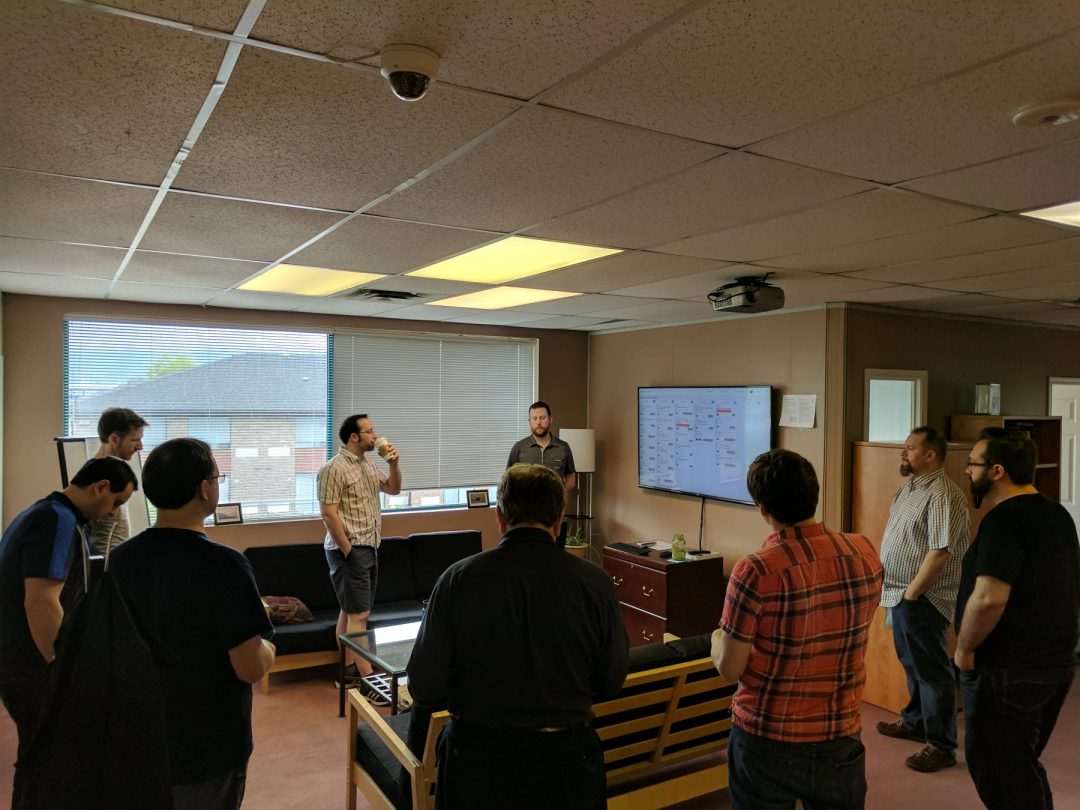The Challenge: When Your Management Style Hits a Ceiling
Picture an MSP manager who's been with the company for years. You're technically sharp, your team respects you, and you've always gotten results. You feel successful, but a number of blindspots are holding you back.
The symptoms show up everywhere:
-
Your team waits for you to make decisions instead of collaborating to solve problems together
-
You're stuck in endless status meetings trying to figure out what's happening
-
Your best people seem disengaged despite your best efforts
-
You're working longer hours, but your team's output isn't improving
Most MSP managers are operationally strong and technically capable, yet they're stuck using a directive management style that worked when tasks were simple. That approach breaks completely when you need your team to think critically and solve complex problems.
The typical response makes things worse:
-
Being more available means more interruptions and less time for your own work
-
Making faster decisions means your team learns to wait for you instead of developing judgment
-
Giving better pep talks creates temporary motivation but doesn't build lasting capability
The Opportunity: Creating a Culture Where Teams Solve Problems, Not Just Follow Orders

Most MSP managers think leadership means having the right answers, being more decisive, or inspiring people with vision. They're trying to be the smartest person in the room when they should be building a culture that makes their team smarter and unlocks their potential.
When you shift from telling people what to do to asking questions that help them figure it out themselves, something shifts. Your team stops waiting for you to solve every problem; people take ownership of outcomes, and you stop burning out because you're not the bottleneck for every decision and problem.
The Framework: Three Pillars of Building a Question-Asking Culture
Pillar One: Define What Coaching Actually Is Then Separate It from Managing
Most MSP managers confuse coaching with sports coaching, where you tell people exactly what to do and when to do it. Non-directive coaching means creating space for people to unpack their own thinking and find their own answers.
Once you understand that distinction, you need to be explicit about which hat you're wearing. If you need to have a difficult conversation about behavior, put on your manager's hat and be direct. If you want to help someone, think through a challenge, put on your coach hat and ask questions to encourage critical thinking.
Split your conversations into clear modes:
-
Managing means setting expectations, holding people accountable, and being directive when necessary
-
Coaching means asking questions that help people figure out their own solutions and build capability
-
Being explicit about which mode you're in means your team isn't guessing what's happening
The coaching strategy here is critical:
Don't just start asking random questions; tell your team you're learning these skills and want to try them
-
Ask open-ended questions using "what" instead of "why" because "why" feels judgmental and puts people on defense
-
For someone who missed a deadline, ask "what happened that you weren't able to meet the deadline" and then "what would need to be different to hit it next time"
-
For someone stuck on a problem, ask "what have you tried already" and then "what else could you try before escalating"
-
When someone brings you a problem, resist the urge to solve it and ask "what do you think we should do"
Start with short coaching moments in regular conversations instead of scheduling formal sessions. If someone comes to you with a challenge, ask "do you want me to tell you what to do, or would you like me to help you think it through?"
Pillar Two: Make Listening Your Primary Job Then Ask Better Questions

Most managers think their job is having answers and making decisions. When you shift to coaching, listening becomes your primary tool. The best coaches listen so intently that what the person says actually informs the next question.
What becomes possible when you listen deeply:
-
You notice patterns in how someone approaches problems that reveal their underlying motivations
-
You catch when someone's energy shifts or they pause, which tells you something important is happening
-
You understand what's blocking them instead of what they say is blocking them
To practice listening, you need to do three things:
First, shut up the ducks quacking on your shoulder. Those ducks are your own experiences, your opinions about what they should do, and your desire to jump in and fix things. When you notice yourself wanting to give advice, that's your cue to refocus on listening.
Coach yourself through the discomfort:
-
When you feel the urge to share your experience, ask yourself "is this actually helpful or am I just relating"
-
Your job isn't to empathize so much that you lose sight of helping them find solutions
-
Remove visual distractions when possible because sometimes a phone call forces you to listen more carefully
Second, track what motivates people, not just what they do. Behavior is what you see on the surface, but motivation is the anchor below the water. When you understand why someone chose a particular approach, you can speak to their motivations instead of just pushing their behavior in a different direction.
Turn observations into coaching conversations:
-
When you notice someone has behavior that is changing, ask "I noticed you've been quieter in meetings lately, what's going on"
-
When someone makes an unexpected choice, ask "what made you decide to approach it that way"
-
If someone's output drops suddenly, ask "what's different this week" instead of assuming they're slacking
Third, replace "but" with "and" in your feedback because "but" erases everything before it. Instead of saying "I like what you did here but here's what needs to change," say "I like what you did here, and here's what we need to adjust."
Pillar Three: Build Discipline by Creating Safe Spaces for Honest Conversations

This only works when people feel safe enough to think out loud, admit what they don't know, and share what's actually blocking them. When your team hides problems or pretends to know answers they don't, you lose time fixing issues that could have been caught earlier.
Key practices that drive results:
-
Start every retrospective by saying "we're here to fix the process, not criticize people"
-
Always begin with "what went well" to get people talking before you dig into what went wrong
-
When someone raises an issue, say "tell me more about that" and listen
-
Then ask the group "how do we prevent this from happening next time" to shift from blame to solutions
Make this approach a regular rhythm rather than a special event:
-
You don't need to schedule hour-long sessions, you only need a 10-minute pragmatic daily huddle addressing what everyone is working on, why they are prioritizing it, and what needs to be unblocked
-
When someone asks you a question, turn it back with "what do you think" before giving your answer
-
After someone completes a project, ask "what would you do differently next time"
-
Use Slack or Teams messages to ask questions, not just give directions
Help your team develop problem-solving skills:
-
When someone brings up a problem they could solve themselves, that's your moment to coach
-
Ask "what have you already tried" and "what else could you try" before offering suggestions
-
For senior people who need to develop others, coach them to block time for thinking
-
Show them how by talking through your own decisions out loud so they can see how you approach problems
The Myth: This Approach Takes Too Much Time and Slows Everything Down
The most common pushback is that asking questions takes longer than just telling people what to do, and MSPs need to move fast and get results.
This sticks because managers think every conversation needs to be a formal session. Directive management can be fast in the moment, but you end up repeating the same conversations repeatedly. Conversations that help someone figure out their own solution might take 10 minutes now but save you hours of repeated questions later.
Some MSP leaders who built this culture achieved results like:
-
Team members solving problems independently that they used to escalate
-
Faster decision-making because people stopped waiting for approval on everything
-
Higher retention because people felt developed and challenged instead of micromanaged
-
Better alignment across departments because everyone understood the thinking behind decisions
The Conclusion: Why the Framework Wins
This approach grew from psychology and performance development, but it translates directly to MSPs. When you build a culture where people think critically instead of just completing tasks, you create teams that can handle complex client problems, adapt to new technologies faster, and make better decisions without needing approval on everything.
When you build this culture, three things happen:
-
Performance improves because people develop judgment and problem-solving skills instead of just following instructions
-
Retention gets stronger because people feel invested in and developed, which creates loyalty beyond just compensation
-
The business scales because you stop being the answer person for everything and your team multiplies your impact
The MSPs that will thrive in the next five years won't be the ones with the best technical processes or the most sophisticated tools. They'll be the ones whose teams can think critically, solve problems independently, and adapt faster than the market changes.
Start by picking one person on your team and trying these questions in your next conversation. Ask "what do you think we should do" instead of telling them your answer. See what happens when you create space for them to think instead of filling that space with your solutions.








